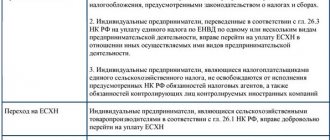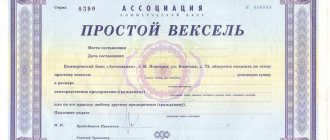28.05.2021What documents can be requested from the bank for verification?
Banks have the right to request documents from the company to verify the sources of profit. The legislation gives credit organizations the corresponding right.
28.05.2021Registering a business through a notary
A bill has been approved, according to which it is possible to open a new company or register as an individual entrepreneur through a notary.
28.05.2021Debt forgiveness by making a contribution to LLC property: what about income taxes?
The organization received a loan from a foreign founder, whose share is 49% in its authorized capital. In order to increase the company's net assets, the founder plans to forgive the debt by contributing the amount of principal and interest to additional capital. Should a Russian company pay income tax on the amount of the forgiven debt and interest under the loan agreement? The explanations of the Ministry of Finance in letter dated April 19, 2021 No. 03-03-06/1/29226 will help you understand the issue.
28.05.2021Transport tax is not paid for a “killed” car
Every year, transport tax is paid by all individuals and legal entities to whom the car is registered. The amount of tax depends on the power of the car. If the car is damaged and cannot be repaired, there is no need to pay tax. But before that, it needs to be deregistered.
28.05.2021The right to VAT deduction cannot be increased by the days the declaration is submitted
The organization was held accountable for committing a tax offense and was assessed a fine. The basis was the refusal to apply a tax deduction for VAT after the expiration of a 3-year period. But the company did not agree with this and went to court. She believed that she still had time to claim the deduction.
28.05.2021Small Business Legal Mistakes
Legal problems are among the TOP 16 reasons why startups fail, according to the analytical company CB Insights. At the same time, in Russia, many beginning entrepreneurs often make similar, from a legal point of view, mistakes. We tell you how to minimize such risks.
28.05.2021Details of creation and adjustment of doubtful provision
Doubtful debt is any debt to an organization arising in connection with the sale of goods, performance of work, or provision of services. But only if it is not repaid within the terms established by the agreement and is not secured by a pledge, surety, or bank guarantee (clause 1 of Article 266 of the Tax Code of the Russian Federation).
28.05.2021Reducing the number or staff of employees: who cannot be fired?
When reducing numbers or staff, the employer does not have the right to dismiss certain categories of employees. What specialists do they belong to?
28.05.2021Russia has been swept by a wave of “commercial” moonshine
Business Ombudsman Boris Titov proposed banning the open sale of moonshine stills in Russia. In his opinion, this can help in the fight against the underground alcohol market. Handcrafted alcoholic drinks are often made not for personal use, but for sale, Titov’s apparatus is convinced.
27.05.2021Deduction of personal income tax when selling a share in the management company of a company
If it is impossible to exempt income from the sale of an individual’s share in the charter capital of the company on the basis of clause 17.2 of Article 217 of the Tax Code of the Russian Federation, the accrued personal income tax can be reduced in the prescribed manner.
27.05.2021On vacation in 2021: calculation and payment of vacation pay. Cheat sheet for an accountant
There are no fundamental changes in the calculation of vacation pay in 2021. You just need to carefully calculate your vacation pay and not forget that there were non-working days in the billing period. Otherwise, the rules for calculating vacation pay are simple and clear.
27.05.2021Imposing disciplinary sanctions: maintaining order
The list of disciplinary sanctions applicable to an employee is limited. If you don’t want to get punished yourself, try not to go beyond it.
27.05.2021Depositing cash into the company's account through ATMs under control
Depositing cash into a company's account through an ATM is not that uncommon today.
27.05.2021How to change information about several directors in the Unified State Register of Legal Entities if they were registered before November 25, 2020
In September 2021, the JSC decided to introduce provisions into the charter stating that the management of the JSC is carried out by several directors acting jointly. The new version of the charter was registered on October 15, 2021. At the same time, the forms of registration documents in force at that time did not allow information to be entered into the Unified State Register of Legal Entities indicating that the directors were acting jointly. How to submit documents for registration of changes about several directors of a joint-stock company, given that information about them can be submitted from November 25, 2021?
27.05.2021There is not much time to adjust SZV-M
If you find an error in the SZV-M, you can avoid a fine only by submitting an adjustment yourself. This must be done before the error is detected by the Pension Fund.
27.05.2021How to fill out and submit documents for benefits if an employee was sick for only 3 days: explanations from the Social Insurance Fund
Since 2021, a mechanism for “direct” payment of benefits from the Social Insurance Fund of the Russian Federation has been in effect. In order to assign benefits, the organization must submit a number of documents to the Fund. But in the event of an employee’s illness, the employer must still pay for the first 3 days from its own funds. What should an employer do if an employee has been sick for only 3 days, representatives of the MRO FSS told in letters dated 05/14/2021 No. 15-15/7710-9682l, dated 05/17/2021 No. 15-15/7710-10787l.
27.05.2021The employee was charged with corrective labor
Correctional labor is a type of criminal punishment, which means that the convicted person is forced to work with income deducted from his earnings in favor of the state. Anyone who receives a sentence of correctional labor will serve it at his place of work.
27.05.2021The tax authorities “froze” accounts: is it possible to recover damages?
The tax authorities suspended operations on the organization’s accounts, and it suffered losses. In what cases can damage caused be recovered?
27.05.2021The Russian Armed Forces refused to consider squash caviar a “defense product”
The “tricky” task... Can you find the difference between a machine gun, tarpaulin boots and... squash caviar? That's it! No amount of erudition and intellect will be enough... But don’t be complex - the judges of two judicial instances also failed. But the Supreme Court could do it, that’s why it’s the Supreme Court. And thereby saved the company from a large fine, a rather large fine (determination dated May 26, 2021 No. 310-ES20-22195).
26.05.2021Personal income tax on compensation for moral damage paid under a settlement agreement
The organization paid the individual compensation for moral damage on the basis of a settlement agreement concluded with him.
Does she need to withhold personal income tax when paying such compensation? 1 Next page >>
Use of bill transactions by enterprises
Recently, modern enterprises are increasingly using bill transactions.
A bill of exchange can act both as a promissory note and as a means of payment. Also, enterprises can use a bill of exchange as an object of sale, in which case the bill of exchange will be one of the types of movable property. Also, increasingly, lenders, when issuing a loan, require the debtor to provide his own bill of exchange as confirmation of the borrowing relationship.
The bill, in turn, can be of two types - interest-bearing or discount:
- An interest-bearing note has a fixed interest rate. It is issued for the purpose of accumulating income.
- A discount bill is interest-free; the discount will be formed in the form of the difference between the amount received by the borrower and the face value of the bill, that is, the amount that he is obliged to return.
Finished works on a similar topic
- Course work Taxation of bills 440 rub.
- Abstract Taxation of bills 280 rub.
- Test work Taxation of bills 240 rub.
Receive completed work or specialist advice on your educational project Find out the cost
Accounting by the drawer of transactions with bills
The drawer, as a party to a debt obligation executed by a bill of exchange, is the borrower. When issuing a bill, he bears the costs of issuing the bill. During the circulation period of the bill, the drawer incurs expenses in the form of interest on the bill.
Issue and circulation of bills
The taxpayer takes into account expenses for the production or acquisition of bill forms, as well as expenses associated with servicing his own bills of exchange as part of non-operating expenses. This is stated in subparagraph 3 of paragraph 1 of Article 265 of the Tax Code of the Russian Federation. According to subparagraph 2 of paragraph 1 of the same article, non-operating expenses also include expenses in the form of interest on debt obligations of any type, including interest accrued on securities and other obligations of the taxpayer. Interest means any pre-declared (established) income, including in the form of a discount on a debt obligation (Clause 3, Article 43 of the Tax Code of the Russian Federation). For profit tax purposes, only the amount of profitability established by the drawer and interest accrued for the actual time of use of borrowed funds (the actual time the bill is held by third parties) is recognized as an expense.
The interest rate on an interest-bearing bill sold at par is immediately known to the drawer. How to calculate this rate for a discount bill or for an interest-bearing bill that is sold at a price below par? The annual interest rate, that is, the yield, for a discount bill for income tax purposes can be determined using the following formula:
I = (N – S): S x 365 (366) days. : T arr x 100%, (1)
where I is the annual interest rate on the bill (profitability of the bill) for profit tax purposes;
N is the denomination of the bill;
S is the placement cost (sale price) of the bill;
T obr - the circulation period of the bill (the number of days from the date of acquisition to the date of repayment of the bill).
Please note: to determine expenses in the form of interest in the current reporting period using the accrual method, T arr - when circulating a bill of exchange with a maturity date of “at sight” - is taken equal to 365 (366) days. After all, such a bill must be presented for payment within one year from the date of its preparation. This is established by paragraph 34 of the Regulations on bills of exchange and promissory notes, approved by Resolution of the Central Executive Committee of the USSR dated 08/07/37 No. 104/1341. However, when the bill is repaid, its yield may be different.
For a bill of exchange due “at sight, but not before,” the presentation period (one year) begins to run on the “not before” date. Therefore, T arr for tax purposes under the accrual method for such a bill is equal to 365 (366) days plus the number of days from the date of drawing up the bill to the date “not earlier.”
EXAMPLE 1
On September 6, 2004, Charodeyka LLC purchased goods in the amount of 165,000 rubles. At the same time, the company issued its own discount bill to the supplier with a nominal value of 200,000 rubles. with a maturity date “at sight, but not earlier than December 31, 2004.”
The annual interest rate (yield) of a discount bill for profit tax purposes is:
(200,000 rub. – 165,000 rub.) : 165,000 rub. x 365 days : 482 days (365 days + 117 days (from September 6 to December 31, 2004)) x 100% = 16.06%. This rate is used to determine expenses in the form of interest at the end of the reporting period when the bill is circulated. When the bill is repaid, the yield may be different.
The yield (annual interest rate) on an interest-bearing bill sold at a price below par value for profit tax purposes can be determined using the following formula:
I = [( N – S ) + N x I pr x T arr.: 365 (366) days) ]: S x 365 (366) days. : T arr x 100%, (2)
where I is the annual interest rate on the bill (profitability of the bill);
N is the denomination of the bill;
S is the placement cost (sale price) of the bill;
I pr - interest rate on an interest-bearing bill;
T obr - the circulation period of the bill (the number of days from the date of acquisition to the date of repayment of the bill). In this case, T arr is determined in the same way as in formula 1.
EXAMPLE 2
Let's use the conditions of example 1. Let's agree that interest is charged on the amount of the bill based on a rate of 10% per annum.
The annual interest rate (yield) of the discount bill for profit tax purposes in this case is:
[(200,000 rub. – 165,000 rub.) + 200,000 rub. x 10% x 482 days. : 365 days] : 165,000 rub. x 365 days : 482 days x 100% = 28.18%.
The specifics of classifying interest on debt obligations as expenses are prescribed in Articles 269, 265 and 328 (for banks - in Articles 269 and 291) of the Tax Code of the Russian Federation. Article 269 provides for two ways to recognize interest. It is up to the taxpayer to decide which method to choose. The first method: interest accrued on a bill of exchange (including in the form of a discount) is recognized as an expense if the amount of accrued interest does not significantly deviate from the average level of interest charged on debt obligations issued in the same reporting period in which the bill of exchange was issued. comparable conditions. This is established in paragraph 1 of Article 269 of the Tax Code of the Russian Federation. In this case, expense in the form of interest on bills of exchange, the period of circulation of which falls on more than one reporting period, is recognized at the end of each reporting period using the accrual method. This is stated in paragraph 8 of Article 272 of the Code. Under the cash method, the drawer recognizes the expense in the form of interest (discount) on the bill on the date of repayment of the bill (clause 3 of Article 273 of the Tax Code of the Russian Federation). After all, it is on this date that the income on the bill is paid.
What is meant by a significant deviation from the average interest level? The answer to this question can be found in paragraph 1 of Article 269 of the Code. Thus, a significant deviation in the amount of accrued interest on a bill is considered to be a deviation of more than 20% upward or downward from the average level of interest accrued on debt obligations issued in the same quarter on comparable terms. Debt obligations issued on comparable terms mean debt obligations issued in the same currency for the same terms in comparable amounts, secured by similar security. At the same time, a bill of exchange is an unconditional debt obligation. Therefore, some experts believe that a bill can only be compared with unsecured debt obligations. Others have a different opinion. Keep in mind: the official position of the tax authorities has not been expressed on what is meant by comparable terms for a bill of exchange.
The tax authorities propose to determine the average level of interest charged on debt obligations issued in the same reporting period, in accordance with clause 5.4.1 of the Methodological Recommendations for the Application of Chapter 25 “Organizational Income Tax”, Part Two of the Tax Code of the Russian Federation, approved by order of the Ministry of Taxes of Russia dated December 20 .2002 No. BG-3-02/729.
The amount of expenses in the form of interest (discount), which reduces the drawer’s tax base for income tax in the current reporting period, can be determined using the following formula:
R report = S x I expenditure x T report: 365 days, (3)
where R report is the amount of expenses that reduce the tax base in the reporting period;
S is the cost of placing a bill (its sale price);
I expense - the profitability of the bill, which is used to calculate the amount of expenses that reduce the tax base in the reporting period. It can be equal to either the annual interest rate on the bill or the marginal rate at which expenses are accepted for tax purposes;
T report - the number of days from the date of the bill of exchange to the end date of the reporting period. If the date of drawing up the bill of exchange and the date of its repayment fall on different tax periods, then in the tax periods following the period of drawing up the bill of exchange, the start date of the current tax period is taken as the starting point.
EXAMPLE 3
Let's use the conditions of example 2. Let's assume that Charodeyka LLC is a Russian organization. The amount of debt obligations issued for a period of four months on comparable terms and interest rates on them are given in table. 1. Credit risks associated with the financial position of Charodeyka LLC are not considered in the example.
The average level of interest on debt obligations issued on comparable terms is equal to:
(205,000 rub. x 16% + 202,000 rub. x 17% + 200,000 rub. x 18% + 198,800 rub. x 17%): (205,000 rub. + 202,000 rub. + 200,000 rub. + 198,800 rub.) x 100% = 16.99%.
Table 1 . Debt obligations issued on comparable terms
| Debt obligation | Amount of liability, rub. | Interest rate on the obligation, % |
| Bill A | 205 000 | 16 |
| Bill B | 202 000 | 17 |
| Bill C | 200 000 | 18 |
| Bill D | 198 800 | 17 |
Consequently, the amount of interest that reduces the tax base is in the range from 13.59 (16.99% x 0.8) to 20.39% (16.99% x 1.2). As you can see, the value of the annual interest rate (yield) on the bill is much higher (28.18%). Therefore, as part of expenses for profit tax purposes when circulating a bill of exchange, interest is taken into account, calculated based on a rate of 20.39%. For 9 months of 2004, Charodeyka LLC will reduce the tax base by the following amount:
(RUB 165,000 x 20.39% x 25 days (from September 6 to September 30, 2004)): 365 days. = 2304.35 rub.
The second method: the maximum amount of interest recognized as expenses is taken equal to the refinancing rate of the Bank of Russia, increased by 1.1 times (clause 1 of Article 269 of the Tax Code of the Russian Federation). By the way, many organizations use this method to determine the limit value, since selecting debt obligations issued on comparable terms and justifying their choice is not only difficult, but also expensive. In addition, the taxpayer has the right to independently choose the method for determining the maximum interest rate for profit tax purposes.
EXAMPLE 4
Let's use the conditions of example 2. Let's assume that Charodeyka LLC decided to use the refinancing rate to determine the maximum amount of interest that reduces the tax base. The refinancing rate in September 2004 was 13%.
The maximum amount of interest that reduces the tax base is 14.3% (13% x 1.1). Therefore, as part of expenses for profit tax purposes when circulating a bill of exchange, interest is taken into account, calculated based on a rate of 14.3%. For 9 months of 2004, Charodeyka LLC will reduce the tax base by the following amount:
165,000 rub. x 14.3% x 25 days. : 365 days = 1616.1 rub.
Repayment of a bill
When repaying a bill of exchange, the drawer recognizes expenses in the form of interest for profit tax purposes based on the actual time of use of borrowed funds and the profitability declared when placing the bill of exchange (economic profitability). In this case, one should take into account the maximum interest rate established by Article 269 of the Tax Code of the Russian Federation. Please note: you can calculate the declared yield of a bill of exchange (economic profitability) with a maturity date “at sight, but not earlier” using formulas (1) and (2) (Tobr is taken to be the period from the date of the bill of exchange to the date “not earlier”).
In the event of termination of the agreement (repayment of the debt obligation) before the expiration of the reporting period, the expense is recognized as incurred. It is included in the relevant expenses on the date of termination of the agreement (repayment of the debt obligation).
EXAMPLE 5
Stroymash LLC issued a promissory note with a nominal value of 1,000,000 rubles on January 10, 2004 to Energo OJSC. with a maturity date of “on sight, but not earlier than September 10, 2004” in payment for services worth RUB 900,000.
Consider the following three options:
1) the bill was repaid on August 10, 2004 for 995,000 rubles;
2) the bill was repaid on September 1, 2004 for 998,000 rubles;
3) the bill was repaid on October 10, 2004 for 1,000,000 rubles.
Stroymash LLC calculates the amount of interest recognized as an expense for profit tax purposes based on the refinancing rate of the Bank of Russia, increased by 1.1 times. The refinancing rate of the Bank of Russia on the date of drawing up the bill is 16% per annum.
The period from the date of drafting the bill (January 10, 2004) to the “not earlier” date (September 10, 2004) is 244 days. In this case, the economic profitability of the bill, established by the issuer and calculated based on the date “not earlier”, is determined as follows:
(1,000,000 rub. – 900,000 rub.) : 900,000 rub. x 366 days : 244 days x 100% = 16.67%.
And the profitability of the bill, calculated for profit tax purposes to determine expenses in the form of interest when the bill is circulated based on a period of 365 (366) days plus the period from the date of drawing up the bill to the minimum date of presentation of the bill for payment, is equal to:
(1,000,000 rub. – 900,000 rub.) : 900,000 rub. x 366 days : 609 days x 100% = 6.67%.
As we can see, the profitability of the bill, calculated for profit tax purposes to determine expenses in the form of interest when circulating the bill (6.67%) is much lower than the maximum interest rate of 17.6% (16% x 1.1). However, the actual yield of the bill on the maturity date may exceed both the maximum interest rate and the economic profitability declared when the bill was issued (see Table 2).
According to the first option, for profit tax purposes, the drawer can recognize expenses in the form of interest only in the amount of 87,312.54 rubles. In fact, he spent 95,000 rubles. This happened because the drawer does not have the right to recognize expenses in the form of interest on the bill in an amount exceeding the yield declared by him when issuing the bill (16.67%) and above the marginal yield (17.6%).
In the second option, the situation is similar: the drawer can recognize in tax accounting expenses only in the amount of 95,920.82 rubles, and not the entire amount of expenses incurred by him (98,000 rubles), since the actual profitability of the bill is higher than stated.
In the third option, the actual profitability is less than the economic and marginal one. Therefore, for profit tax purposes, you can recognize the entire amount of expenses in the form of interest (RUB 100,000).
Features of filling out a tax return
The drawer, regardless of whether he is a professional participant in the organized securities market (OSM) or not, always reflects the costs of the production and circulation of the bill on sheet 02 of the income tax return. For him, a bill of exchange is, first of all, a debt obligation and only secondarily a security. The costs of issuing a bill of exchange are indicated on line 040 of sheet 02 of the income tax return. In Appendix No. 7 to Sheet 02, these expenses are reflected on line 110 as other non-operating expenses and losses equated to non-operating expenses.
Expenses in the form of interest on a bill accrued for the use of borrowed funds, within the limits established by Article 269 of the Tax Code of the Russian Federation, and taking into account Article 265 of the Tax Code of the Russian Federation, are also shown on line 040 of sheet 02 of the income tax return. Such expenses are deciphered on line 020 of Appendix No. 7 to sheet 02.
EXAMPLE 6
Let's use the conditions of example 5. Let's say the reporting period for a taxpayer is a quarter, half a year, 9 months. Let's consider how transactions with bills of exchange are reflected in the declaration of the drawer (see Table 3)
Features of accounting for your own bill
Accounting for transactions related to a bill of exchange is one of the most complex and controversial from a tax point of view. For the purpose of correct accounting, it is necessary to correctly use a fairly large volume of articles of the Tax Code.
Note 1
Regardless of the type of bill, the participants in the relationship will have income and expenses in the form of interest, which must be reflected in tax accounting. The discount on the own bill will be considered non-operating income or expense and will be distributed evenly. The amount of income or expense in the form of interest on debts is taken into account based on the profitability of the obligation and its duration in the reporting period as of the date of recognition of income/expenses. The discount will be recognized as received and included in expenses/income at the end of the relevant reporting periods, regardless of the date from which interest is accrued.
Are you an expert in this subject area? We invite you to become the author of the Directory Working Conditions
Accounting for early repayment of bills
In case of early repayment of the promissory note, income will be recognized as received and included in income on the date of repayment of the debt obligation. The remaining difference will be taken into account by the holder of the bill at a time between the entire amount of the discount and that already accrued as income in tax accounting. The borrower who paid for the security ahead of schedule similarly accrues additional expenses in the form of the difference between the actually paid discount amount for early repayment and the already calculated amount in tax accounting.
Note 2
If the bill is repaid before the end of its validity period, then income is accrued in the same way, since the discount is distributed evenly over periods and will not be fully taken into account by the time the bill expires.
When calculating expenses, it is important to remember that they are standardized. There are two ways to normalize interest expenses. The first method is rationing based on the refinancing rate of the Central Bank. The procedure is established by Article 269 of the Tax Code of the Russian Federation.
A comparison of data with other loans can also be used - used in the case where the company has other debt obligations on similar terms. The maximum amount of interest by which taxable profit can be reduced will be determined based on the average level of interest on similar obligations. When choosing this method, it is necessary to have a clear procedure for determining comparable loans in the accounting policies of the organization. Loans are considered comparable if the following conditions are met: the same currency and term, comparable amounts and similar collateral.
Bill of exchange for payment of goods
If an enterprise uses the method of determining revenue as funds are received when calculating the tax base (to the account of the enterprise or bank), then upon receipt of a bill of exchange as payment for products, tax settlements with the budget will be made in the reporting period in which the bill of exchange becomes due (if the bill is received from a third party - then settlement is made at the time of its receipt). If revenue is determined upon shipment, then taxable profit will be taken into account immediately, regardless of the actual receipt of funds.
Looking for ideas for study work on this subject? Ask a question to the teacher and get an answer in 15 minutes! Ask a Question






